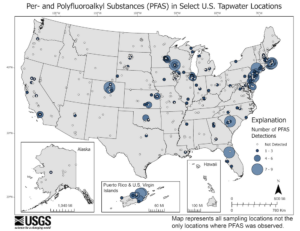Tag
epa
-
The federal government aims to crack down on PFAS in drinking water. What happens next?
The federal government intends to regulate PFAS in drinking water. Local water systems will have to follow the new rules.

-
Review of EPA data leads USA Today to towns with contaminated water
Yes, database websites can seem clunky, and government data can seem hopelessly riddled with errors. But searching, downloading and analyzing…

-
•
Almost 40 years later, fallout from Mich. contamination disaster continues
Four decades after polybrominated biphenyl (PBB), a dense, flame-retardant toxin, was accidentally dumped into a Michigan cattle feed supplement, Detroit…

-
•
Your money or your life? Missouri town had to choose
On KBIA public radio, Jacob Fenston tells the story of a Missouri town faced with a brutal, impossibly high-stakes catch-22.…

-
•
Blame trucks, not just factories, for industrial pollution in Seattle
Spurred by a few recent studies, InvestigateWest’s Robert McClure and KCTS-Seattle’s Jenny Cunningham launched an investigation to figure out just…

-
•
EPA changes would improve public access to data
A recent OMB Watch story covers the EPA’s latest attempt to leverage the Toxic Substances Control Act to make it…

-
Agenda indicates federal health priorities
This week, OMB Watch brought our attention to the recently released “Current Unified Agenda of Regulatory and Deregulatory Actions,” which…

-
•
Sapien chronicles formaldehyde battle
At ProPublica, Joaquin Sapien tells the story of how Louisiana Republican Sen. David Vitter successfully obstructed the FDA’s attempts to…

-
•
Group’s tours highlight pollution in West Oakland
California Watch’s Ali Winston writes that to increase awareness of both legacy and ongoing sources of toxins in their venerable…

-
•
AP finds contaminated water in schools
The Associated Press has analyzed a decade of Environmental Protection Agency data and found that tests at thousands of American…


